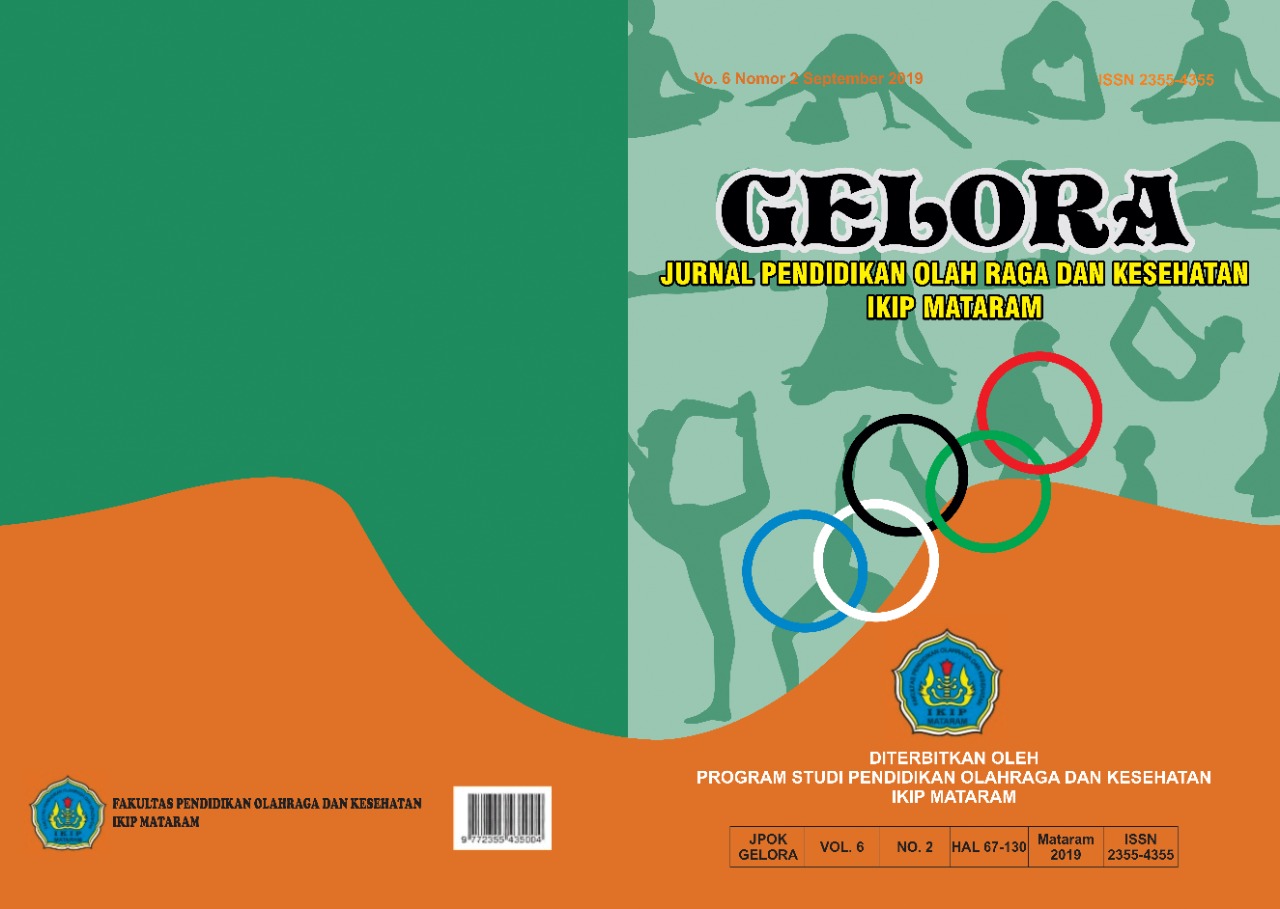PENGARUH MEDIA DAN KOORDINASI MATA TANGAN TERHADAP KETERAMPILAN FOREHAND PADA CABANG TENNIS (experimental studies on thundercat cilegon’s tennis club)
DOI:
https://doi.org/10.33394/gjpok.v6i2.4037Keywords:
influence of media, hand-eye coordination, and forehand skillAbstract
References
Anita J. Harrow, (215) Taxonomy Of The Psycomotor
Domain A Guide for Developing
Behavioral Objective, New York:
Longman Inc,
Arie Sutopo dan Alma Permana (2006) Buku
Penuntun Praktikum Ilmu Faal Kerja.
Jakarta: Ergofisiologi, Edisi II,
Arikunto, S. 2002. Prosedur Penelitian, Jakarta: PT
Rineka Cipta
Bompa, T.O. 1983. Theory And Methodology of
Training. IOWA: Kendall Hunt Publishing
Company.
B. D. Syaiful dan Zain Aswan (2006) . Strategi
Belajar Mengajar. Jakarta: Rineka Cipta.
Harsono. (2015) Coaching Dan Aspek-Aspek
Psikologi Dalam Coaching. Penerbit
Tambak Kusuma. Bandung,
James Tangkudung (2012) Kepelatihan Olahraga
Pembinaan Prestasi Olahraga, Jakarta:
Penerbit Cerdas Jaya
Landlinger, J., Stefan Lindinger, Thomas Stöggl,
Herbert, W., and Erich Müller. Key factors
and timing patterns in the tennis forehand
of different skill levels. ©Journal of Sports
Science and Medicine (2010) 9, 643-65.
Department of Sport Science and
Kinesiology, University of Salzburg,
Austria, CD-Laboratory “Biomechanics
inSkiingâ€, University of Salzburg, Austria
Lardner, R. 2000. Pedoman Lengkap Bermain
Tennis. Jakarta: Dahar Prize
Renstrom, A. P.H. 2002. Tennis. Sweden: Karolinska
Institutet Stockholm
Roetert, P. 2011. Tennis Anatomy. Australia: Human
Kinetics
Syaifuddin. 2006. Anatomi Fisiologi. Jakarta: Buku
Kedokteran EGC
Singer, Roger N. (1980) Motorlearning and Human
Performance. New York: Macmillan
Publishing C, Inc and Collier Macmillan
Publisher.
Sutopo, Arie dan Permana, Alma. Buku Penuntun
Praktikum Ilmu Faal Kerja (Ergofisiologi).
Edisi II, Jakarta, 2006
Y. S . Santoso Giriwijaya (1992) , Ilmu Faal
Olahraga. Bandung : FPOK IKIP Bnadung



